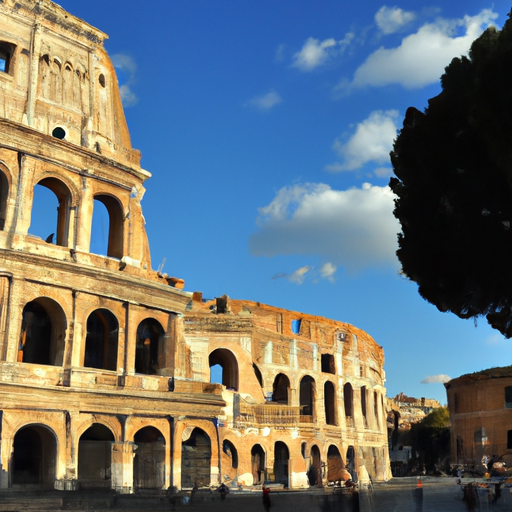In this article, we’ll be discussing content and the differences between the types. We’ll explore the various types of content and how they differ from one another. By the end of this article, you’ll have a clear understanding of the distinctions between these content types and their role in different contexts. So, let’s dive in and explore the world of content!

Definition and Overview
Understanding the concept of differences
Differences are an inherent part of our world, shaping everything from our physical appearances to our cultural practices. At its core, a difference refers to a distinguishing characteristic or quality that sets one entity apart from another. These variances can be observable or intangible, and they exist across various domains of human existence. Understanding and appreciating these differences is vital for fostering inclusivity and promoting social harmony.
Types of differences
Differences can be categorized into several distinct types, each representing a specific sphere of human existence. Physical differences pertain to variances in appearance, size, and shape. Functional differences relate to variations in purpose, operation, and performance. Psychological differences encompass differences in cognition, perception, and behavior. Cultural differences involve distinctions in traditions, customs, and values. Social differences refer to disparities in social roles, norms, and interactions. Geographical differences encompass variations in climate, landscapes, and natural resources. Economic differences involve disparities in income, wealth, and economic systems. Lastly, political differences encompass variations in governance, ideologies, and power structures.
Physical Differences
Differences in appearance
Physical differences in appearance can be observed through variations in characteristics such as skin color, facial features, body shape, and height. These dissimilarities arise due to genetic factors, environmental influences, and cultural practices. Embracing the diversity of physical appearances is crucial for promoting inclusivity and combating prejudice and discrimination.
Differences in size
Size differences can be observed in various aspects of human existence, including body size, organ size, and even the size of objects and structures. These variations can be influenced by genetics, nutrition, and environmental factors. Accepting and appreciating the range of sizes that exist among individuals promotes a more inclusive and body-positive society.
Differences in shape
Differences in shape encompass variations in body proportions, facial features, and the contours of objects. These dissimilarities arise due to genetic factors, environmental influences, and personal choices. Recognizing and celebrating the diversity of shapes among individuals fosters acceptance and self-confidence.

Functional Differences
Differences in purpose
Functional differences relate to the different purposes or goals that entities serve. For example, the purpose of a knife is to cut, while the purpose of a spoon is to scoop. These differences in purpose allow for the specialization and efficient use of various tools and resources.
Differences in operation
Differences in operation refer to the distinct ways in which entities perform their functions. For instance, a computer operates differently from a bicycle, and a microscope operates differently from a telescope. Understanding these differences in operation helps in utilizing different tools and technologies effectively.
Differences in performance
Differences in performance relate to the varying levels of effectiveness or efficiency in achieving a particular function. This can be observed, for example, in the different performance levels of cars, electronic devices, or even individuals in different tasks or roles. Recognizing and appreciating these performance differences enables us to leverage the strengths and capabilities of each entity in different contexts.
Psychological Differences
Differences in cognition
Psychological differences encompass variations in cognitive processes, such as thinking, reasoning, and problem-solving. These dissimilarities can be influenced by factors such as genetics, upbringing, education, and personal experiences. Embracing cognitive diversity promotes innovation, collaboration, and the development of well-rounded perspectives.
Differences in perception
Differences in perception refer to variances in how individuals interpret and make sense of the world around them. This includes variations in senses such as vision, hearing, taste, touch, and smell, as well as differences in perception of emotions, aesthetics, and experiences. Recognizing and respecting these perceptual differences cultivates empathy and understanding.
Differences in behavior
Psychological differences also manifest in variations in behavior, including personality traits, communication styles, and social interactions. These differences can be influenced by genetic predispositions, cultural norms, and personal beliefs. Accepting and appreciating diverse behavioral patterns promotes tolerance and the understanding that there are multiple valid ways of engaging with the world.

Cultural Differences
Differences in traditions
Cultural differences encompass variations in traditions, rituals, and customs that are unique to different groups or societies. These differences can include ceremonies, festivals, greetings, cuisine, and art forms. Acknowledging and respecting cultural traditions fosters intercultural understanding and allows for the preservation of diverse cultural heritage.
Differences in customs
Customs are specific practices or behaviors that are widely accepted within a particular community or society. These customs can vary greatly across different regions, reflecting cultural norms and values. Understanding and adapting to different customs when interacting with diverse groups promotes effective cross-cultural communication and builds connections.
Differences in values
Cultural differences are also evident in variations in values, which represent the guiding principles and beliefs held by individuals and societies. These values shape attitudes towards issues such as family, religion, authority, and societal norms. Recognizing and respecting different cultural values fosters empathy, understanding, and global citizenship.
Social Differences
Differences in social roles
Social differences encompass variations in the roles individuals occupy within a society or community. These roles can be based on factors such as age, gender, occupation, and social status. Acknowledging and challenging stereotypes associated with social roles promotes equality and encourages individuals to pursue their passions and aspirations without limitations.
Differences in social norms
Social norms are the unwritten rules that govern behavior within a particular society or group. These norms can vary across different cultures and are influenced by historical, religious, and social factors. Recognizing and respecting diverse social norms is essential for promoting cultural sensitivity and ensuring harmonious social interactions.
Differences in social interactions
Social differences are also evident in the varying styles of interaction and communication across different individuals and cultures. This includes differences in greetings, verbal and non-verbal communication, and social etiquettes. Recognizing and adapting to different social interaction styles facilitates effective communication and builds strong interpersonal relationships.

Geographical Differences
Differences in climate
Geographical differences are reflected in variations in climate conditions across different regions. These differences can include temperature, precipitation, wind patterns, and the presence of distinct seasons. Understanding and adapting to different climates allows for the development of appropriate agricultural practices, infrastructure, and lifestyle choices.
Differences in landscapes
Differences in landscapes refer to the physical features and formations found in different regions, including mountains, plains, forests, and bodies of water. These variations create unique habitats for flora, fauna, and human settlements. Appreciating and preserving diverse landscapes contributes to the protection of biodiversity and cultural heritage.
Differences in natural resources
Geographical differences are also evident in the distribution of natural resources, such as minerals, water, and energy sources, across different regions. These varying resource endowments influence economic development, trade patterns, and geopolitical dynamics. Recognizing and managing resource differences in a sustainable and equitable manner is crucial for global prosperity and environmental conservation.
Economic Differences
Differences in income
Economic differences encompass variations in individual and household incomes across different populations. These differences can be influenced by factors such as education, employment opportunities, and wealth distribution. Addressing income disparities is essential for reducing poverty, promoting social mobility, and ensuring equitable access to resources and opportunities.
Differences in wealth
Differences in wealth refer to variations in the ownership of assets, including financial resources, property, and investments. These differences can perpetuate social and economic inequalities and impact access to education, healthcare, and quality of life. Promoting wealth redistribution and economic empowerment can help address these disparities and create more inclusive societies.
Differences in economic systems
Economic differences can also be seen in the diverse economic systems adopted by different countries and regions. These systems range from market economies to planned economies, each with its own approach to resource allocation, production, and distribution. Understanding the nuances of different economic systems facilitates cross-border trade, cooperation, and informed policy-making.

Political Differences
Differences in governance
Political differences refer to the various forms of government and governance structures adopted by different countries and regions. These variations can include democratic systems, authoritarian regimes, monarchies, and federations. Respecting different governance models promotes international cooperation, democracy, and the protection of human rights.
Differences in ideologies
Political differences are also evident in the diverse ideologies and belief systems that shape political discourse and policies. These ideologies can range from liberalism and conservatism to socialism and nationalism, influencing approaches to issues such as social welfare, individual rights, and foreign relations. Engaging in constructive dialogue and understanding different ideologies promote civic participation and informed decision-making.
Differences in power structures
Political differences are reflected in the distribution of power within a society or political system. These power structures can include variations in political leadership, decision-making processes, and the balance of power between different branches of government. Promoting transparency, accountability, and checks and balances ensures a fair and inclusive political landscape.
Conclusion
In conclusion, differences are an essential aspect of human existence, shaping various domains including physical appearance, functional characteristics, psychological traits, cultural practices, social dynamics, geographical factors, economic systems, and political ideologies. Embracing and valuing these differences is crucial for fostering inclusivity, promoting social harmony, and creating a more equitable and understanding society. By recognizing and respecting the diverse ways in which individuals and communities exist and interact, we can build bridges, break down barriers, and work towards a world that celebrates and thrives on its vibrant differences.






